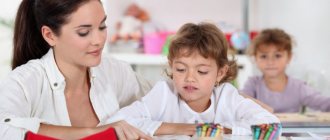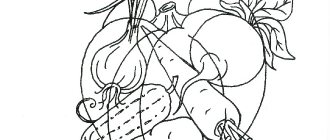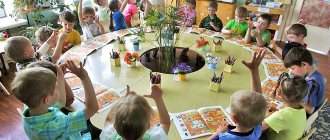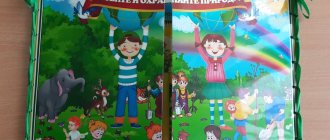Why do children need physical exercises?
The main purpose of warming up is to relieve accumulated fatigue during monotonous work. This type of activity is typical during classes at school, early development centers, art lessons, or in an after-school group. As a result, physical education in kindergarten develops a love of activity in students.
Maintaining physical activity has a positive effect on the process of perceiving new information. Playful physical exercises for preschoolers and schoolchildren help to clearly show children the importance and value of exercise, as well as to introduce children to sports.
Benefits and Benefits
Dynamic physical training for children has several important advantages:
- Strengthening posture - all exercises are selected in such a way that all muscle groups are involved;
- Work on attention - the child learns to switch from one activity to another, practicing concentration, physical training in primary school helps to prioritize tasks and improves performance;
- Maintaining health – general health activity increases stamina;
- Finding contact with students - casual physical activity helps to establish communication with children.
Active physical training with movements is carried out in accordance with the preferences of the mentor. So, students can be at their desks, stand at the blackboard, in the openings between tables, or even form small groups. At the same time, schoolchildren develop important communication skills in a large group.
Health-improving children's physical exercises are successfully carried out in primary schools, kindergartens, and additional education institutions for preschool children. Exercises can be aimed at warming up the eyes, facial muscles, or the entire body. The form and frequency of classes is selected depending on the number of students.
Charging for hands
How often do young schoolchildren get tired of their hands from writing and counting? These physical exercises in class will invigorate you and help you relax. Shake your hands to the beat of the lines from the poems, and also clench and unclench your fingers. .
* * *
We wrote, we wrote, Our fingers are tired, We'll rest a little and start writing again.
* * *
Here are my assistants, (we stretch our arms forward) Turn them any way you want. (turn the brushes in different directions) One, two, three, four, five. They knocked, turned (clap our hands) and wanted to work. Everyone sat down quietly.
* * *
Fingers do exercises to get less tired. And then they will write letters in a notebook. (Children stretch their arms forward, clench and unclench their fists.)
* * *
We bend our fingers together, clench our fists tightly. One, two, three, four, five - We begin to unbend. (Stretch your arms forward, clench your fingers into fists as tightly as possible, and then relax and unclench.)
* * *
To write beautifully to everyone, we need to stretch our fingers. They clenched their fists tightly and held them for a while. They held it and unclenched it. They showed me their palms. Do it quickly, kids. Now it's time for the letter.
* * *
As soon as we start to get tired, we’ll immediately unclench our fingers, we’ll spread them wider, we’ll strain them harder.
* * *
Let's intertwine our fingers and join our palms. And then, as soon as possible, we will squeeze it tightly.
* * *
Here are my helpers, turn them any way you want. One two three four five. They knocked, turned and wanted to work. Everyone sat down quietly.
Flower
The sun is rising - (Palms are raised up, fingers form a “bud”, the bases of the hands are pressed against each other). The flower is blooming! (At the same time we spread our fingers to the sides.) The sun sets - the flower goes to bed. (Put your fingers together.)







